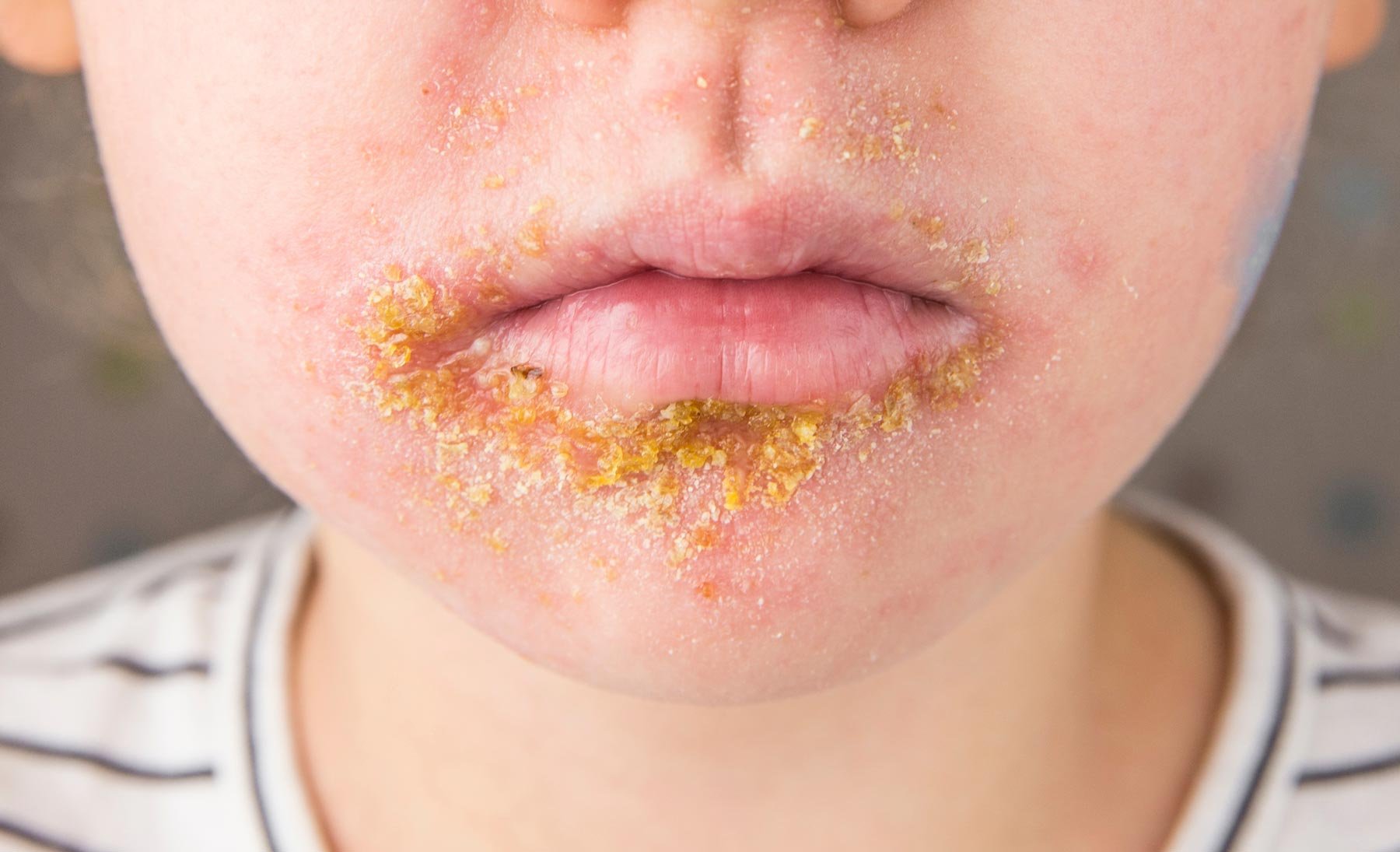
Impetigo
Impetigo is a contagious skin infection that is caused by bacteria. It most commonly affects children and is characterized by the development of red, itchy sores on the face, neck, and hands. The sores may be filled with pus and may burst, leaving a yellow-brown crust on the skin. Impetigo is spread through direct contact with the sores or through contaminated objects, such as towels or toys.
There are two types of impetigo:
Nonbullous impetigo is the most common type and is characterized by the development of red, itchy sores that may be filled with pus.
Bullous impetigo is a less common form of the infection and is characterized by the development of large, fluid-filled blisters (bullae) on the skin.
Symptoms of impetigo may include the development of red, itchy sores on the face, neck, and hands that may be filled with pus and may burst, leaving a yellow-brown crust on the skin. The sores may be accompanied by fever, swelling, and swollen lymph nodes. In severe cases, impetigo may cause scarring and changes in the color and texture of the skin.
Impetigo is diagnosed through a combination of a physical examination and laboratory tests. Laboratory tests may include the culture of bacteria from the sores.
Treatment for impetigo typically involves the use of antibiotics to kill the bacteria that are causing the infection. Antibiotics may be taken by mouth or applied to the skin in the form of ointments or creams. It is important to follow the recommendations of a healthcare provider and to take medications as directed to control the infection and prevent complications.

